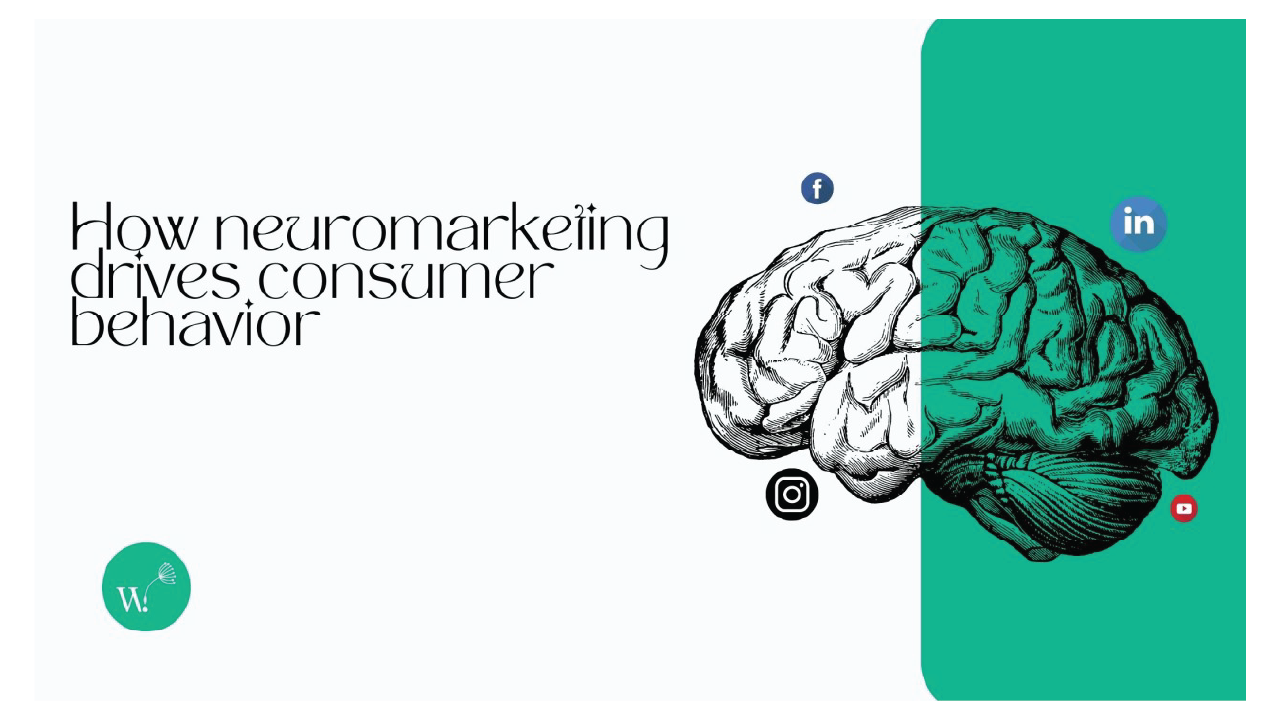Neuromarketing 101

Coke is just soda, Apple phones are just mobile phones (Sorry Apple fans), and Levi’s are just jeans. Yet, consumers go out of their way and choose these specific brands over others. An economist or even any person would say, How is this possible, that a rational consumer would be willing to pay more for exactly the same thing? We love to think about ourselves as rational, don’t we?
“The brand exists nowhere else but in the mind of the consumers.”
So, the good thing is, we’re not mindless shopping zombies (At least some of us). But we do make a lot of our decisions subconsciously. And that’s where neuromarketing comes in. Companies are trying to better understand how our brain works, like every one of us, to figure out what we really want. If someone asks you, do you want an orange or do you want a chocolate bar? You would say, you’d want the orange. But, do you really want orange? While making these choices, We feel as if we’re in control, and also assume that we are thinking through these things very rationally.
But study after study has shown that we are extremely irrational and that we’re pretty unaware of the factors which ultimately lets us decide the different behaviours. In short, we don’t always know what we want. We don’t know if we actually want the orange or if we prefer the chocolate bar. And that’s why neuromarketers have adopted a range of technologies to take a deep dive inside consumer’s brains.
“Brand is the story, Design is the story-telling”
You may often overlook a brand’s colour or even the typeface it uses in its communication. But, through various studies, it has been confirmed that a brand’s colour, and its font, becomes its very own identity. Now, imagine a McDonald’s AD where the logo is no longer yellow, say it’s purple! How ridiculous would that be? Or even imagine Apple’s brand logo with a different font! For some reason, it wouldn’t sit right with us

How would McDonald’s logo look if you
“Companies know us better than we know ourselves.”
Here are some insights from the rule book that companies use to trick us, or at least influence our decision-making.
One: They exhaust you.
There are two different ways that our brains think. There is system 1, which is quick, automatic, and unconscious. The second system is deliberate and conscious, but it takes a lot of effort.
If I ask you, what is your age? System 1 will immediately have an answer to that question. But if I ask you what is 28 times 43, Unless you are Neelakantha Bhanu Prakash, you’re going to have to switch to system 2. This requires effort. Imagine that you are now grocery shopping.
You have a limited amount of time to navigate the aisles and make a lot of decisions. You’re exhausted when you finally reach the checkout counter. And this is where these shops lure you with an array of sugary foods, just near the billing counter, which you might choose to purchase at the last minute.

Two: They keep you on the treadmill.
Another quirk of our brain that brands are using is that it’s constantly seeking pleasure, with the emphasis on the word constant. Because pleasure is so fleeting, brands always wants us to be on the vicious, “hedonic treadmill”. The iPhone 11, The iPhone 12, The iPhone 13 and Bam after a year comes iPhone 14. Whatever pleasure you got from purchasing the iPhone is now gone, puff! And now you’re How neuromarketing drives consumer behaviour 4 looking to, again, jump on the hedonic treadmill and chase the next pleasure, just to lose it all when the next big thing comes.
Three: They hide little nudges in plain sight.
Check out this ad from KFC. See nothing unusual? Look again. There’s an actual dollar bill photoshopped into the burger – which happens to cost one dollar. And check out this Coca-cola can. The brand made it look like it’s smiling, to tie in with its brand image of happiness. And in literally every ad for watches, the time is set to 10 past 10. Because that makes it look like the watch is smiling at you

These types of subtle hints are called ‘primers’. And this is not limited to visual triggers. An experiment also showed that if a wine store plays French music, customers buy more French wine. And if it plays German music, they buy more German wine.
So where does all this leave us? How will Neuromarketing further continue to impact our decisions? While some of these examples make us go awe about how far we have come, many scientists feel that we have barely scratched the surface. Therefore, it becomes very important (like how important oregano is to pizza) for us How neuromarketing drives consumer behaviour 5 consumers to be aware of these advancements and not just consider them as some fad, as we are pretty sure that neuromarketing is here to stay


Wishbox India
i need to help